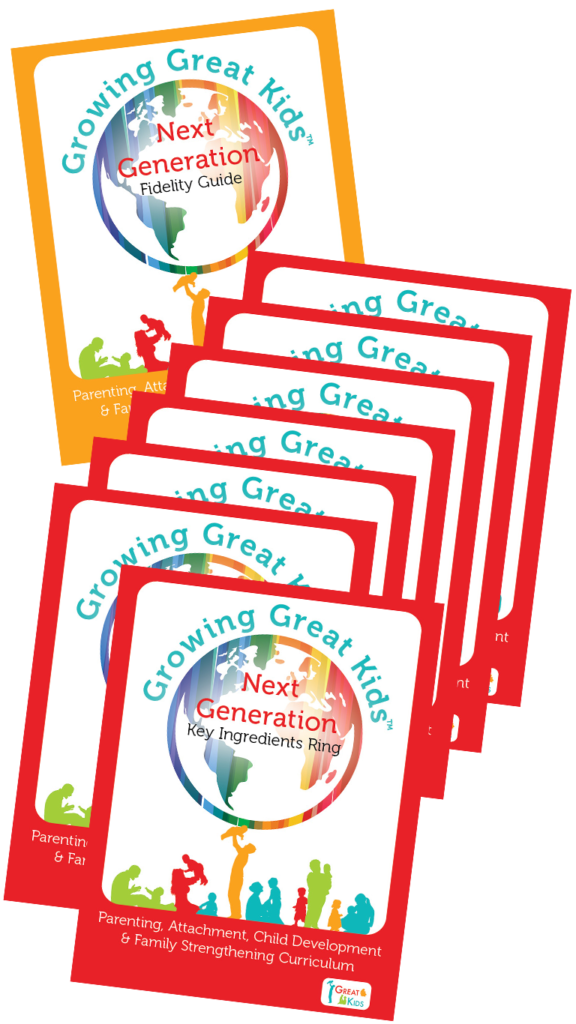 | | | | About the Author Melissa Weekes is a Product Development Specialist. Prior to joining Great Kids® in 2018, she worked as a home visitor with Public Health Services where she used the Growing Great Kids® Curriculum. Melissa lives in Nova Scotia, Canada, with her husband and enjoys any opportunity to be creative! |
The month of December can sneak up on you like a train at an underground station! It appears out of nowhere and barely gives you a chance to get on board before it whisks you away. For many people, December is a busy month filled with holiday celebrations, activities, and family traditions.
Whatever holidays your family celebrates, if you’re like me, you probably have some kind of feel-good movie playing in your head about how these family events should go. Smiling faces, delicious meals, love, and laughter, or something to that effect. In reality, the feel-good holiday movie often plays out more like a comedy, action film, or, worst-case scenario, a full-on drama.
We know there’s no such thing as a perfect family, so we shouldn’t be surprised when we experience those imperfect holiday moments: disagreements, differing expectations, meltdowns due to overexcited or over-tired kids (or adults). Not to mention things like disrupted travel plans, power outages, culinary fails, or the classic “cat brings down the holiday decorations” scenario.
My favorite imperfect holiday moment as an adult was when we had an unexpected blizzard that shut everything down. Suddenly, the frenzy of activity stopped, and we were forced to let go of our expectations and enjoy the moment. We put on our winter coats and walked to our friend’s house, slipping and sliding through the blizzard. It was a perfect, unplanned-for holiday moment that’s become a cherished memory.
Despite the challenges of these imperfect holiday moments, they can provide opportunities to grow our family resilience as we draw on our family strengths.5 Family strengths are the positive characteristics we have that support our family’s well-being.5 For example, some families have a good sense of humor while others are resourceful and flexible. Every family has its own unique combination of strengths shaped by their life experiences.3 Furthermore, family strengths can change over time.3
Interestingly, researchers have found some core strengths that strong families across cultures and around the world have in common.1,2,3,4,6 These strengths define how strong families function and work together and include:4,5
- Showing appreciation and affection for one another,1,4,5,6
- Being committed to and being able to depend on one another,1,3,4,5,6
- Sharing positive communication by talking openly and listening to one another,1,4,5,6
- Spending time together doing things they enjoy,1,4,5,6
- Promoting empathy and compassion through spiritual well-being, and1,4,5,6
- Working together to manage stress and challenges.1,4,5,6
While this is an inspiring list of strengths, we don’t automatically start out with all these qualities. When you look at this list, like me, you may see areas where your family is strong and other areas where there’s ample room for growth. As the expert on your family, you already know that growing a strong family takes time and effort.5,6 And let’s face it, some days, we’re just content to get by the way things are!
However, investing energy into making our family stronger is beneficial for our family’s well-being AND for the welfare of each family member as an individual.3
When our family is thriving, each member can experience an increased sense of connection, value, belonging, and satisfaction.2
Not only that, but strong families provide a safe and secure environment where kids can be themselves, have the confidence to try new things, and learn how to handle challenges.7 In other words, strong families make strong children who grow up to be strong adults.
When we reflect on our family’s journey and the challenges we’ve encountered along the way, we start to realize that our family is already strong in many ways.5 According to the experts, identifying the strengths our family already has and discussing each member’s unique perspective is a great place to start on the path to becoming stronger.2,6 Once we’ve identified our family strengths, we can then consider the areas that are important to us to develop and select one strength to work on.2,6
Focusing on strengths can in itself be refreshing, as it’s human nature to dwell on the differences or the challenges we face as families.5 When we focus on staying connected and caring for one another, we can work through challenges in a way that draws us together rather than pulling us apart.6
The good news is, even as individuals, we can make a difference in strengthening our family.6,7 Whether that means showing appreciation, initiating family fun, or rolling with those imperfect holiday moments, when we focus on our family’s strengths, we’re more likely to end this busy month stronger than ever.1,3,5
References
1. DeFrain, J. D., Swanson, D., Friesen, J., & Brand, G. (2008, September). Creating a strong family: What is a strong family? University of Nebraska – Lincoln Extension, Institute of Agriculture and Natural Resources. https://extensionpublications.unl.edu/assets/pdf/g1885.pdf
2. DeFrain, J. D., & Stinnett, N. (2008, September). Creating a strong family: American Family Strengths Inventory. University of Nebraska – Lincoln Extension, Institute of Agriculture and Natural Resources.
3. Dunst, C. J. (2021). A meta-analytic investigation of the relationships between different dimensions of family strengths and personal and family well-being. Journal of Family Research, 33(1), 209-229. https://doi.org/10.20377/jfr-578
4. Innis, G. (2016, December 2). What makes a family strong? Michigan State University. https://www.canr.msu.edu/news/what_makes_a_family_strong
5. International Encyclopedia of Marriage and Family. (n.d.). Family strengths. In Encyclopedia.com. Retrieved October 24, 2022, from https://www.encyclopedia.com/reference/encyclopedias-almanacs-transcripts-and-maps/family-strengths
6. Lynn, D. (2018, November 20). Six traits of strong families. Synergies – Oregon State University. https://synergies.oregonstate.edu/2018/six-qualities-of-strong-families-2/
7. Raising Children. (2020, November 24). Strong families: What they are, how they work. Raisingchildren.et.au. https://raisingchildren.net.au/grown-ups/family-life/routines-rituals-relationships/strong-families


